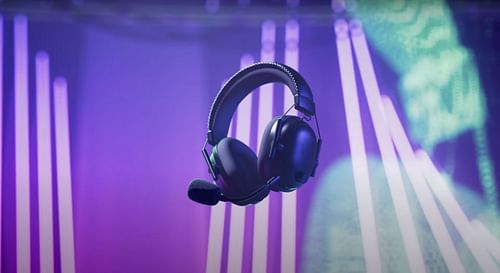
Gaming headphones vs IEMs: Which is best in 2024?
Gaming headphones vs IEMs (In-Ear Monitors) has posed a concerning decision if you’re looking to upgrade your audio equipment for a better listening experience. When I was younger, I had trouble deciding how much to spend on audio equipment because the benefits from upgrades were more subtle than with other electronics.
However, whether you realize it or not, the audio equipment you use plays a crucial role in creating an immersive entertainment experience.
Gaming headphones are worn around the head and over the ears. Certain gaming headphones also have accompanying PC software that allows you to adjust EQ settings and make sound profiles. On the other hand, IEMs are inserted into your ear canal and they stay in place by forming a seal. This means that they always block out some amount of background noise.
If you're struggling to pick between the two, this article will compare gaming headphones vs IEMs in several categories so you can pick what works best for you.
NOTE: This article is subjective and solely reflects the writer's opinion.
Gaming headphones vs IEMs: Differences in soundstage

The main advantage of all headphones (including gaming headphones) is that they tend to have an excellent soundstage. The soundstage refers to the wideness and depth of the audio playback. This means that if you listen to a song, each instrument will have a clearly defined place in the mix.
The sound stage is three-dimensional, so it includes both the left or right panning of an element and the perceived distance of it. A wide soundstage is something that most audiophiles desire because the listening experience is more immersive when you feel like each member of the band is playing at a clearly defined distance from you.
I prefer to have a wide soundstage when gaming for similar reasons. Most in-game audio plays at a different volume and at different parts of the soundstage depending on which direction your character is facing. Having this reproduced accurately makes me feel like I'm part of the game world.
Additionally, the competitive advantage it offers in FPS games where being aware of which direction bullets are being fired from and how far away an enemy is by listening to their footsteps can be the difference between life and death.
Because of the compromises made to maintain their compact design and build, IEMs are almost never able to match the soundstage of their headphone counterparts.
Gaming headphones vs IEMs: Comfort, portability, and versatility
Gaming headphones are created for extended use in front of a computer, so having a comfortable fit is typically a top concern. IEMs are generally designed for brief use during commutes or for short listening sessions.
It's definitely possible to find a pair of IEMs that allow for comfortable use without irritation, but I struggle to use IEMs for more than 40 minutes at a time. However, this is not a hard and fast rule as there are also certain headphones that I struggle to wear for long sessions as well because of their weight and tight-fitting band.
IEMs are easily the winner when it comes to portability. Their compact and lightweight build make them easy to carry, and I can easily coil them and slip them into my pocket.
On the other hand, gaming headphones tend to be bulkier and I either need to have a backpack or a separate pouch to carry them around. Their designs also tend to be flashy with RGB and a 'gamer aesthetic' so I am hesitant to wear them in public and garner unwanted attention.
In my opinion, IEMs tend to be more versatile since I can use them for general audio purposes and gaming as well. However, many IEMs don't come with a mic attached, while almost all gaming headphones include a mic. Even on the IEMs that include it, the mic is often an afterthought and may be noisy.
Gaming headphones vs IEMs: Price comparison

IEMs have an incredible price-to-performance ratio, emerging as the clear winner in the gaming headphones vs IEMs battle. If you're on a budget then there are many solid options for IEMs in the sub $70 range. These offer acceptable sound quality and come with several ear tip sizes so you can find ones that seal perfectly in your ear. The noise isolation and bass levels will be determined by how strong of a seal you're able to create.
Another important thing to note is that IEMs usually follow the law of diminishing returns, with models in the higher price tiers not offering that much more in terms of quality beyond a certain price point (usually $500). This does not hold true for headphones, and there are significant improvements in sound signature and quality the higher up you go.
On the other hand, budget gaming headphones often miss out on features and quality headphones tend to be pricey. Features like a detachable mic and virtual surround sound are often not available in budget gaming headphone models. They also cut corners, often compromising on build quality and materials because of which you may not always get a comfortable fit.
Gaming headphones vs IEMs: Final thoughts
If you've read this far, you probably have a pretty good idea of which side to lean toward in the ultimate choice of gaming headphones vs IEMs. You should make this choice after taking into account where you plan to do most of your listening.
If you primarily intend to use them at home with a gaming rig and you play games where you expect to get a competitive advantage because of the wider soundstage, then going for a gaming headphone is a no-brainer.
On the other hand, if you're on a budget or want something that can handle all of your audio needs beyond gaming, IEMs are a jack-of-all-trades. You can even use them on the go, but it's important to note that this portability usually comes at the cost of a less immersive experience due to the narrower soundstage.